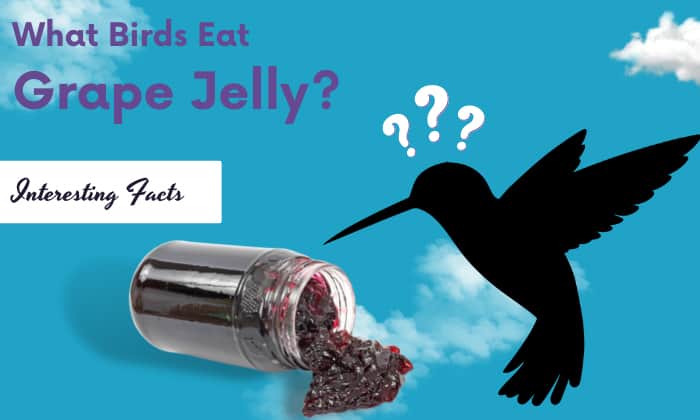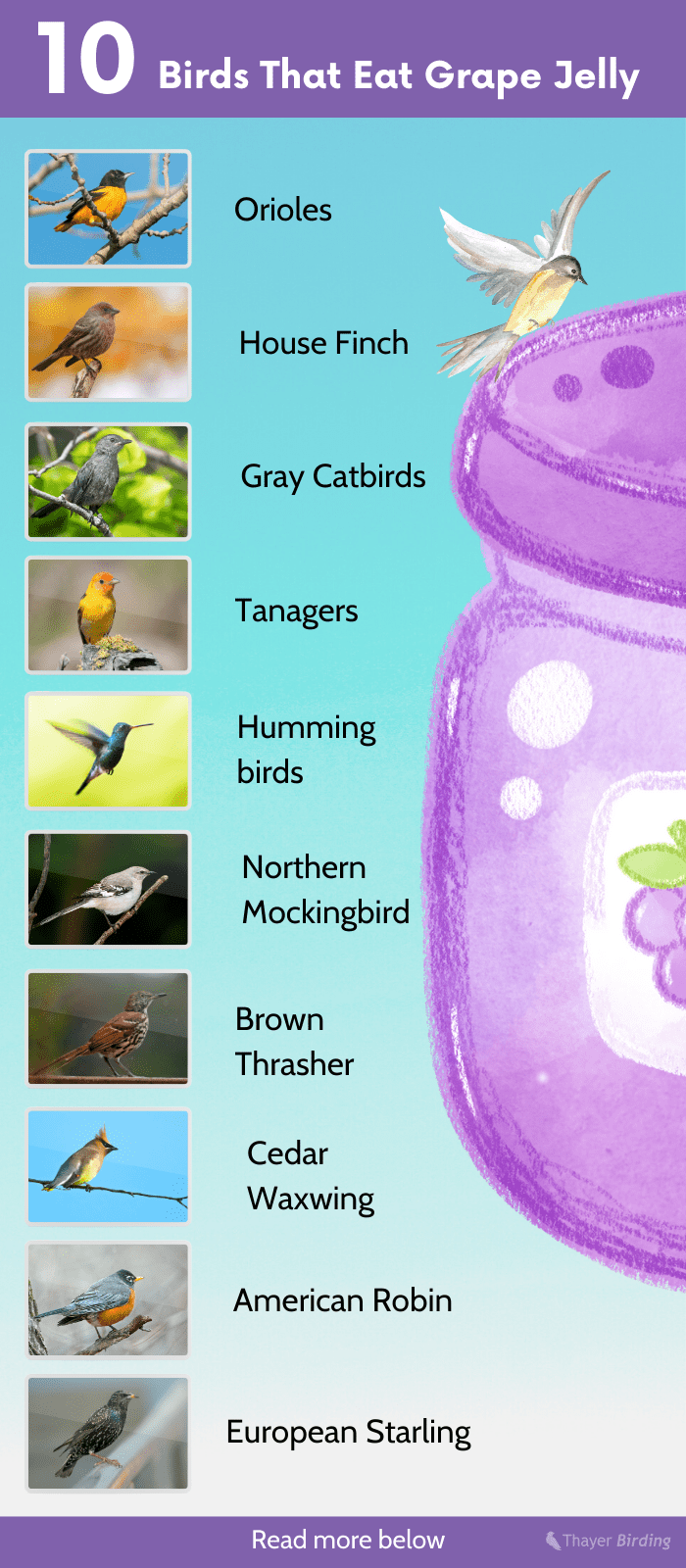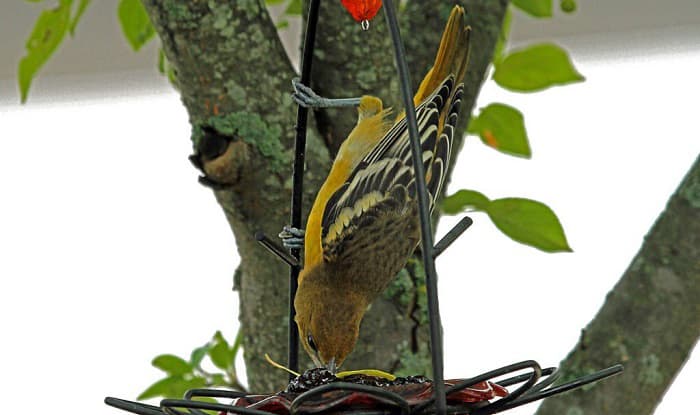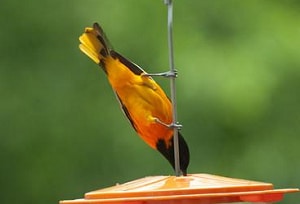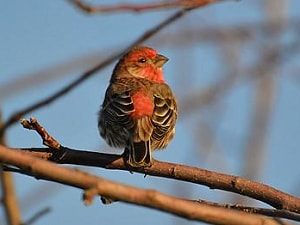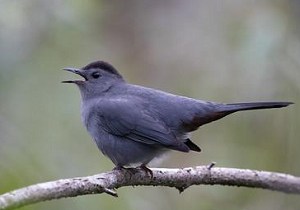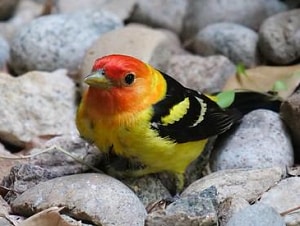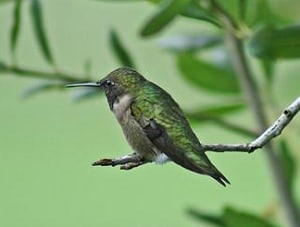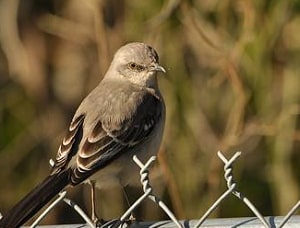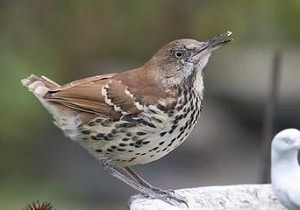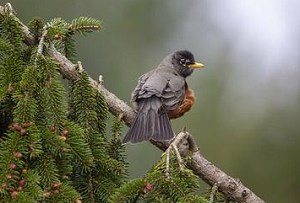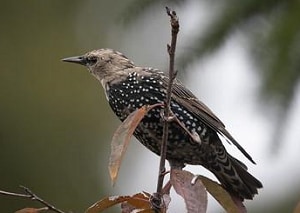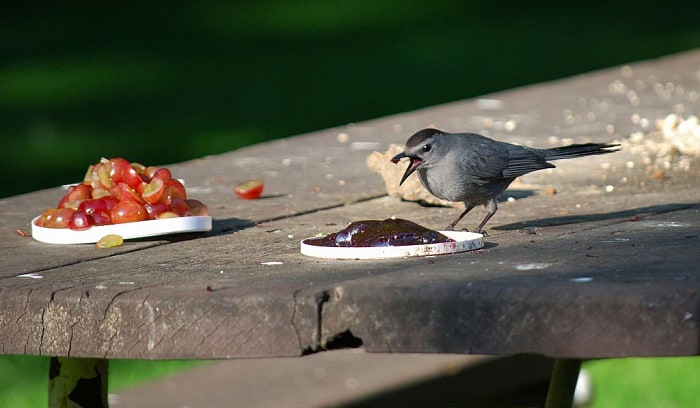What birds eat grape jelly? There are several species that enjoy feasting on this sweet treat. Some of them are orioles, finches, catbirds, tanagers, robins, and hummingbirds.
Birders across the nation stock up on grape jelly to draw different avians to their yards. Let’s get to know these grape jelly-loving avians through their characteristics and pictures.
This information will help you know when to serve this food in your feeder once you see birds flying in your area.
Table of Contents
Birds That Eat Grape Jelly
Several birds like grape jelly as much as you want to spread it on your bread. The fruit-eating kind of birds are usually the ones attracted to this treat. Here are five of them:
1. Orioles
Orioles are commonly spotted in groves and open woods. These yellow-orange and black birds’ diet consists of insects and fruits. You can also find them feeding on nectar from flowers.
They are on the lookout for citrus and sweet nectar during spring. That is why for orioles, you should place jelly and orange slices in their feeders. Several oriole species are a big fan of grape jelly:
- Baltimore Oriole (Icterus Galbula)
- Orchard Oriole (Icterus Spurius)
- Bullock’s Oriole (Icterus Bullockii)
- Hooded Oriole (Icterus Cucullatus)
- Scott’s Oriole (Icterus Parisorum)
- Altamira Oriole (Icterus Gularis)
- Audubon’s Oriole (Icterus Graduacauda)
- Spot-breasted Oriole (Icterus Pectoralis)
- Streak-backed Oriole (Icterus Pustulatus)
- Black-vented Oriole (Icterus Wagleri)
It is advisable to stop feeding orioles grape jelly during the breeding season. This is when the weather is hot and you run the risk of a messy feeder or melting jelly. Besides, birds need protein-rich foods to raise their fledglings, which jelly doesn’t really provide.
2. House Finch
House finches or Haemorhous Mexicanus frequent forests with many trees and open areas like suburban parks. These birds have brown plumage with the males having a rosy tint starting from their head to their breast.
Their diet consists of grains, seeds, and berries. During winter, their diet shifts to mostly fruits and berries. That is why you can often spot them dining on your grape jelly when the cold months hit. Cassin’s Finch is another type of finch that feeds on grape jelly.
3. Gray Catbirds
Gray Catbirds or Dumetella carolinensis got their name after the unique catty-sounding call they make. You can easily spot them along hedgerows, shrublands, marshes, and forest edges.
This gray bird has slate-gray plumage with red details. Their diet includes insects, seeds, fruits, and berries. Catbirds eat grape jelly and are very fond of it. So, don’t be surprised if you see a few of them feeding on your preserve.
4. Tanagers
These are medium-sized songbirds known for their dark orange and bright yellow or red plumage. You can find these species in high mountains’ coniferous forests and shaded oak trees.
Their diet consists mainly of insects and sometimes fruits and berries. During migration, they look for food sources at night. If you have some grape jelly in your feeders and these five types of tanagers are around the area, you can attract them to your yard.
- Scarlet Tanager (Piranga Olivacea)
- Western Tanager (Piranga Ludoviciana)
- Summer Tanager (Piranga Rubra)
- Hepatic Tanager (Piranga Flava)
- Flame-colored Tanager (Piranga Bidentata)
5. Hummingbirds
Hummingbirds or Trochilidae are native to America. They inhabit mountain meadows, tropical rainforests, temperate woodlands, and cloud forests.
These birds get most of their nutrients from nectar, which means they always forage for food by finding a variety of flowers. They will also feed on insects, spiders, and sap from wells.
Anna’s Hummingbird (Calypte Anna) and Ruby-throated Hummingbird (Archilochus colubris) are two well-known types of hummingbirds that are seen feasting on grape jelly.
6. Northern Mockingbird
Northern Mockingbird has the scientific name of Mimus polyglottos. These songbirds are great at mimicking other avians, sometimes all at once.
You can spot them on a freshly mowed lawn, where they can easily feast on crickets. They are also fond of fruit bushes and trees, and you can confidently hang a jelly feeder and expect them to show up.
7. Brown Thrasher
Brown Thrashers or Toxostoma rufum are well-known for their extensive music repertoires, making them stand out among avians.
This secretive bird is challenging to spot as they blend it with tree branches. However, its bold feather patterns and songs make them recognizable. They also feed on fruits and will occasionally feast on jelly when they find it.
8. Cedar Waxwing
Cedar Waxwing or Bombycilla cedrorum is a small bird that can be widely found in several areas, including ponds and dense vegetation like trees. You are most likely to hear their high-pitched calls before you can spot their brown and yellow plumage.
These birds love fruits, including grape jelly and especially berries, and you may feed them ants and beetles as well.
9. American Robin
American Robins, also known by their scientific name Turdus migratorius, feel at home in wild areas like mountain forests. You can also see them pulling worms from your lawns and hear their cheerful songs.
They feed on invertebrates, fruits, and berries. If you have some fruiting trees near your area, you might attract them to your yard with a jelly feeder.
10. European Starling
European Starlings or Sturnus vulgaris form a noisy flock. They are one of the most common songbirds across the continent, frequenting cities and towns.
These birds eat fruits a lot, especially during the cold season. To attract them to your yard, put a feeder on a tall tree or the ground and fill it with grape jelly, berries, and insects like earthworms and grasshoppers.
Feeding Grape Jelly to Your Backyard Birds
Grape jelly is a sweet syrup or preserve made from grapes and sugar. When choosing a grape jelly on the shelves, opt for one with fewer preservatives but not sugar-free.
There are also other types, such as strawberry jelly, but oranges and grape jelly seem to be the most popular ones.
Stick to small dishes and a few tablespoons when giving birds jelly; doing so will prevent wastage in case few or no avians come to the feeder. At the same time, there will be less sticky preserve to weigh birds down when they need to fly.
In practice, grape jelly and oranges cut in half is the common combination used by birders.
The best time to dish out grape jelly is during the fall and spring when migration is underway. This is the ideal treat to give them energy boosts to complete their journey.
Frequently Asked Questions
Why do birds eat grape jelly?
Birds, especially those who eat fruits, are attracted to grape jelly because it is sweet. It also has a high concentration of sugar and carbohydrates, which is what active birds require. They can get a quick burst of energy to complete their migration.
Can birds eat too much jelly?
Avian metabolism can only process so much sugar. Jellies are processed foods and may contain ten grams of sugar in one tablespoon. Hence, birders should give avians only a small amount of jelly at a time.
How often should you change your grape jelly bird feeder?
Change the feeder every day if the weather is warm. Otherwise, every few days will do. Doing so will ensure the jelly on your feeder is fresh and safe for birds.
Do squirrels like grape jelly?
Yes. They often feed on whole plant-based food, but they also love processed foods like grape jelly and peanut butter.
Will sparrows eat grape jelly?
Sparrows’ diet mostly comprises seeds and grains. However, they also feed on fruits. Just like other fruit-eating birds, there is a high chance they’ll eat grape jelly.
Conclusion
Grape jelly is not just for your toast; it is also a treat for orioles and other birds in your backyard.
We hope that learning about what birds eat grape jelly helped you decide when and how to serve jelly for birds. Backyard birds and spring migrants will surely have a great time feasting on this sweet stuff.
Have you tried feeding birds grape jelly? What species visited your yard? Share your experience with us!

George and I became friends after a birdwatching trip with our new group. And we have been enjoying every adventure together. When he told me the idea of establishing a site that shares our experiences and fun, I immediately agreed. After trials and errors, here we have Thayerbirding.


